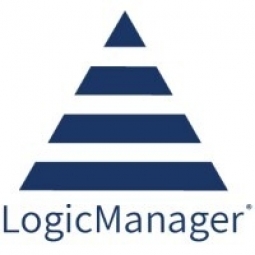Customer Company Size
Large Corporate
Country
- Denmark
Product
- LEGO toys
Implementation Scale
- Enterprise-wide Deployment
Applicable Industries
- Consumer Goods
Applicable Functions
- Business Operation
About The Customer
The LEGO Group is a family-owned company with offices worldwide. The company manufactures one of the world's most beloved toys, Legos. The company believes that 'only the best is good enough' for its products, and this mantra extends to its enterprise risk management program. With a global footprint, The LEGO Group takes a proactive and comprehensive approach to its risk management program.
The Challenge
The LEGO Group, a global toy manufacturing company, has a comprehensive risk management program. The company's approach to risk management is proactive and extensive, and it was recognized as a recipient of the 2015 RMM Recognition Program. The company's risk management program is based on three core processes: an elaborate risk identification method, proactive risk management processes for key business projects, and workshop-based reviews of key strategies and complex initiatives.
The Solution
The LEGO Group's risk management program is based on three core processes. The first is an elaborate risk identification method. The second is maintaining proactive risk management processes for key business projects. The third is conducting workshop-based reviews of key strategies and complex initiatives to ensure their resilience in the face of uncertainty. In addition to these core processes, the company uses board-approved risk tolerance levels to benchmark and measure success. The company also uses the RIMS Risk Maturity Model as a base for prioritization and to foster a risk culture within the organization.
Operational Impact

Case Study missing?
Start adding your own!
Register with your work email and create a new case study profile for your business.
Related Case Studies.
.png)
Case Study
Improving Vending Machine Profitability with the Internet of Things (IoT)
The vending industry is undergoing a sea change, taking advantage of new technologies to go beyond just delivering snacks to creating a new retail location. Intelligent vending machines can be found in many public locations as well as company facilities, selling different types of goods and services, including even computer accessories, gold bars, tickets, and office supplies. With increasing sophistication, they may also provide time- and location-based data pertaining to sales, inventory, and customer preferences. But at the end of the day, vending machine operators know greater profitability is driven by higher sales and lower operating costs.

Case Study
Series Production with Lot-size-1 Flexibility
Nobilia manufactures customized fitted kitchens with a lot size of 1. They require maximum transparency of tracking design data and individual processing steps so that they can locate a particular piece of kitchen furniture in the sequence of processes.

Case Study
American Eagle Achieves LEED with GE LED Lighting Fixtures
American Eagle Outfitters (AEO) was in the process of building a new distribution center. The AEO facility management team decided to look at alternate options for lighting layout that could provide energy and maintenance savings. AEO would need a full-time maintenance employee just to replace burned-out fluorescent tubes.

Case Study
Revolutionizing Rodent Control
From pet- and child-safe traps, to touch-free and live-catch rodent control solutions, Victor continues to stay committed to producing superior products that meet the varying needs of today’s pest control professionals. And, with a long standing history supporting customers in the food processing, service, and retail settings, Victor knew that strict regulations were costing organizations thousands of dollars in excess overhead trying to manage their rodent-control solutions. Trap inspections in these environments are often difficult and time consuming, requiring personnel to manually check a trap’s status multiple times per day, amounting to over six hours of manual labor. Victor is looking for an innovative way to increase operational efficiencies with the use of technology.









